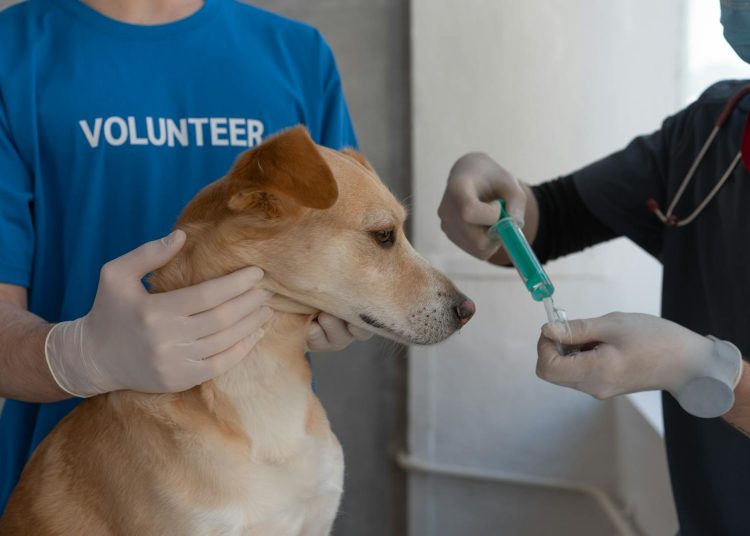Pet insurance is a topic that often raises questions among pet owners, and it’s easy to see why. With so many different plans and coverage options, pet insurance can seem confusing and complex. In addition, there are a number of myths that have arisen around the idea of insuring pets, and these misconceptions can deter people from getting the coverage they need. In this article, we’ll debunk five of the most common myths about pet insurance so that you can make an informed decision for your furry friend.
Myth 1: Pet Insurance Is Too Expensive
One of the most common myths about pet insurance is that it’s simply too expensive for the average pet owner. Many people believe that the cost of monthly premiums will end up being higher than any potential veterinary expenses. While pet insurance does require a financial commitment, the cost of coverage is often much less than what you would pay for a major veterinary procedure out of pocket.
Veterinary costs are on the rise, with routine visits and preventive care being just the beginning. Accidents and illnesses, such as a broken bone or a cancer diagnosis, can quickly lead to bills totaling thousands of dollars. Pet insurance allows you to budget for your pet’s health care needs by spreading the cost over time, rather than facing a large, unexpected expense.
Moreover, there are many pet insurance plans available, each with different levels of coverage and cost. You can choose a plan that fits your budget, whether you want basic accident-only coverage or comprehensive coverage that includes preventive care. It’s also worth noting that enrolling in pet insurance when your pet is young and healthy can help keep premiums more affordable.
Myth 2: Pet Insurance Only Covers Serious Emergencies
Another myth is that pet insurance only covers serious emergencies, such as surgeries or life-threatening conditions. While it’s true that pet insurance can be a lifesaver in emergencies, it can also provide coverage for a wide range of other veterinary needs. Many pet insurance policies cover not only accidents but also illnesses, chronic conditions, and even preventive care, depending on the type of plan you choose.
For example, accident and illness plans cover everything from infections to allergies, while some comprehensive plans include wellness coverage for vaccinations, dental cleanings, and routine exams. This means that pet insurance can help with both unexpected emergencies and regular health care needs, providing more value than many pet owners realize.
It’s important to choose a plan that aligns with your pet’s specific health needs. If you’re concerned about preventive care and routine wellness, look for a plan that includes these services. By doing so, you can make sure that you’re getting the most out of your pet insurance policy.
Myth 3: Pet Insurance Is Not Worth It for Healthy Pets
A common misconception is that pet insurance is not worth the investment for pets that are currently healthy. Some pet owners think that because their pet is young and in good health, they don’t need coverage. However, no pet is immune to accidents or unexpected illnesses, and having pet insurance in place can make all the difference when the unexpected happens.
Pet insurance is most beneficial when it’s purchased early in a pet’s life, before any major health issues arise. Most pet insurance policies do not cover pre-existing conditions, so enrolling your pet while they are young and healthy ensures that you have coverage in place if any health problems develop in the future. This is especially important for breeds that are predisposed to certain health conditions.
Even the healthiest pets can experience accidents, such as swallowing foreign objects, breaking a bone, or developing an unexpected illness. Pet insurance provides a safety net, allowing you to give your pet the best care possible without worrying about the financial burden. It’s better to have coverage and not need it than to face a costly veterinary bill without any assistance.
Myth 4: Pet Insurance Is Too Complicated
Many pet owners are hesitant to purchase pet insurance because they believe it’s too complicated to understand or that the claims process will be a hassle. While it’s true that pet insurance comes with its own terminology and policy details, understanding the basics is not as difficult as it may seem.
Pet insurance works similarly to human health insurance, but with a simpler process. You pay a monthly premium for coverage, and when your pet needs veterinary care, you pay the bill upfront and submit a claim for reimbursement. Most pet insurance providers offer user-friendly mobile apps or online portals that make submitting claims quick and easy. Many companies even offer direct deposit for reimbursements, which speeds up the process.
When it comes to choosing a plan, there are plenty of resources available to help you compare different providers and policies. Websites that provide side-by-side comparisons of pet insurance plans can be a valuable tool for finding the right coverage for your pet. And if you have any questions, most pet insurance companies have customer service representatives who can help explain the details.
Myth 5: All Pet Insurance Policies Are the Same
Another common myth is that all pet insurance policies are the same, and therefore there’s no need to compare providers or carefully read the policy details. In reality, pet insurance policies can vary significantly from one provider to another, and understanding the differences is crucial to choosing the right plan for your pet.
Coverage options, reimbursement rates, deductibles, waiting periods, and exclusions can all vary depending on the provider. Some policies may have breed-specific exclusions, while others offer coverage for hereditary conditions. The reimbursement rate—the percentage of the vet bill that the insurance company will cover—can also vary, typically ranging from 70% to 90%. Additionally, some policies have annual or lifetime coverage limits, while others offer unlimited coverage.
It’s important to carefully compare different policies to ensure that you’re getting the coverage that best suits your pet’s needs and your budget. Take the time to read the fine print, ask questions, and understand what is and isn’t covered before making a decision. By doing so, you can avoid surprises down the road and make sure you’re getting the most value out of your pet insurance.
Making an Informed Decision About Pet Insurance
Pet insurance can be a valuable tool for managing the cost of veterinary care, but it’s important to separate fact from fiction when considering your options. By understanding the reality behind these common myths, you can make an informed decision that best suits your pet’s needs and ensures they receive the best possible care.
Whether your pet is young and healthy or prone to certain health issues, pet insurance can provide peace of mind and financial protection in the face of unexpected medical expenses. Don’t let myths and misconceptions prevent you from exploring an option that could benefit both you and your beloved companion.








